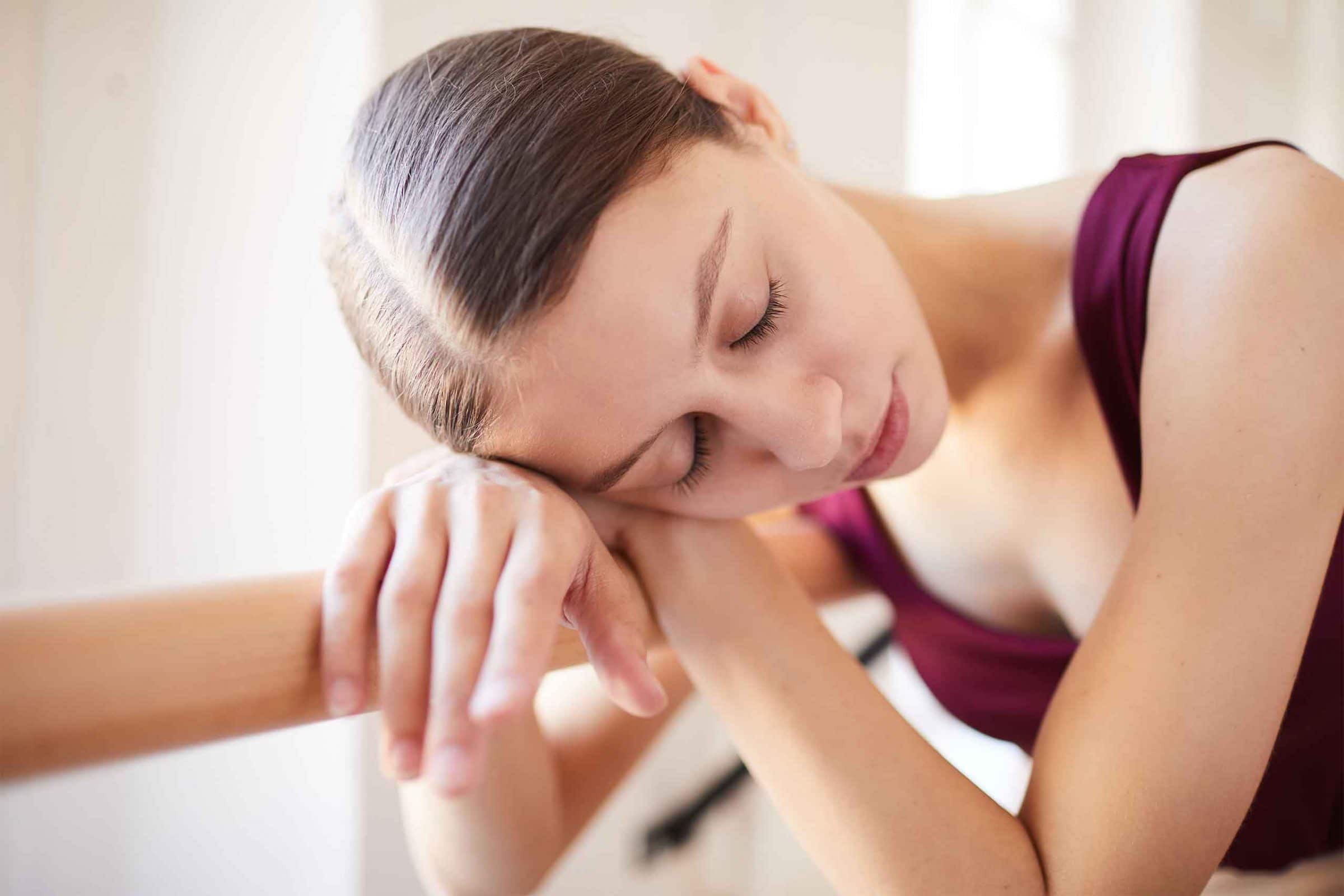Dancing past the point of exhaustion is something to be cautious about. Most dancers know the feeling that accompanies a request for one more drill by their teacher towards the end of dance class. Their heart isn’t in it, and according to research, it shows in the quality of their jumps.
A recent study completed by Danielle Jarvis, an athletic trainer and Associate Professor of kinesiology at California State University Northridge, found that fatigued dancers may lack the muscle control required to land jumps correctly and carefully. This means attempting to do so puts them at a higher risk for injury.
During the study, Jarvis wanted to monitor how fatigue would impact dancer performance, so she asked 17 dancers to perform 12 sautés in second position. The execution of these jumps was captured using a motion camera system and plates to measure the force of landing. Following this, the group danced energetically until they felt fatigued. Once tired, they were asked to repeat their sautés. The changes from the first round of jumps completed while fresh and energised, to the second while tired were compared.
Not surprisingly, the results found that fatigue had a huge impact on the dancers. It was noted that dancers have a tendency to collapse into a deeper plié at the end of a jump when tired. They also showed an increased degree of dorsiflexion upon landing. This means the ankle bends upwards more than it would when the dancer wasn’t exhausted. Another problem noted in the findings was the propensity for the dancer to roll in towards the arch of the foot, which is already known to be associated with forced turnout and an increased risk of injury. Such habits caused by being tired can increase the risks for tendon overuse injuries (especially the Achilles), foot or knee injuries.
So, how can we prevent fatigue related injuries? Firstly, if you don’t feel like you’re jumping at your best, it may be time to stop. In addition to being cautious with training and knowing your limits, you can also begin eccentric strengthening exercises. These exercises focus on controlled motions, such as careful, precision pliés at the end of your jumps. This will help to focus and maintain technique while jumping, even when you’re worn-out. Controlled lowering is key to building strength. As part of the recommendations following her study, Jarvis recommended this exercise:
Stand on both feet, either turned out or in parallel. Relevé, and lower slowly for 5 counts. Then, try it one foot at a time. Work up to completing 3 sets of 10 on each leg.
At Newcastle Dance Academy, we are committed to safe dance practices and injury prevention at all times. If you have any questions regarding the link between dancer fatigue and jumping injuries, or would like to know more about helpful strengthening exercises to safeguard yourself when tired, please feel free to phone our friendly team on 4961 6233.

